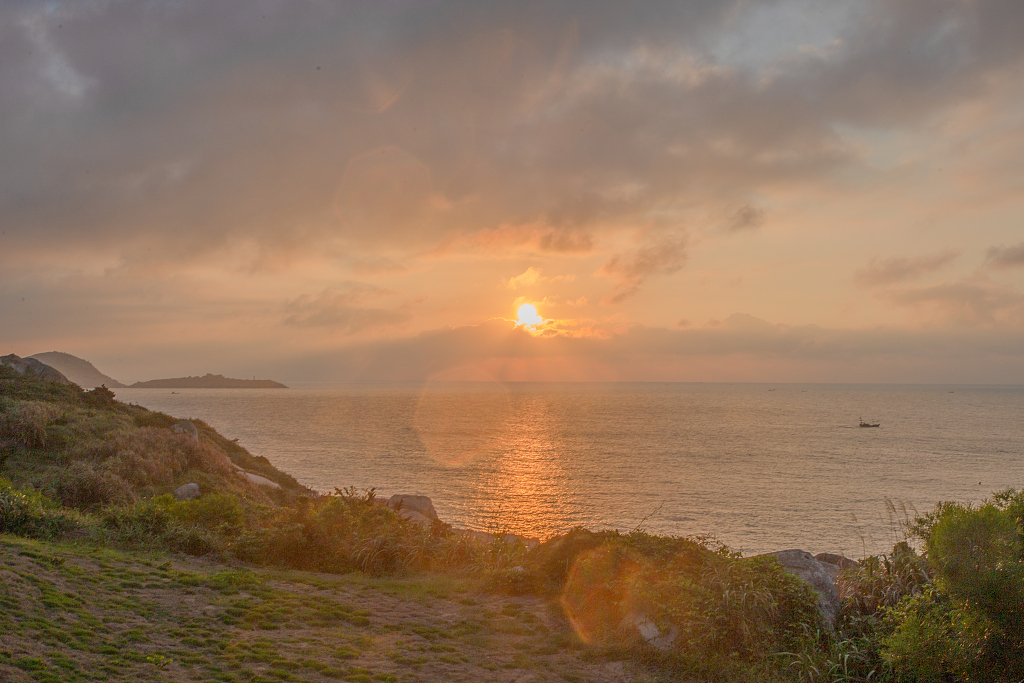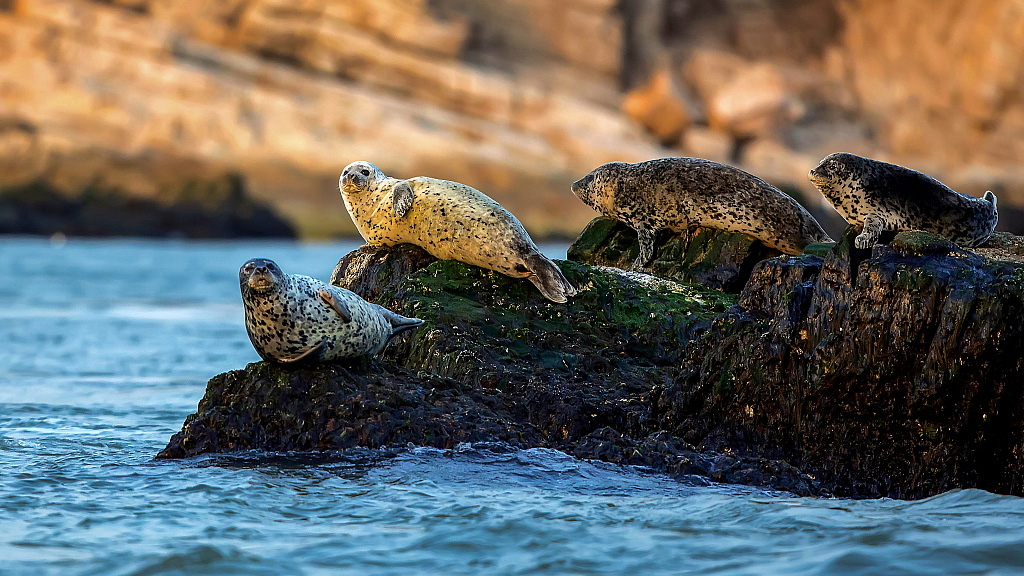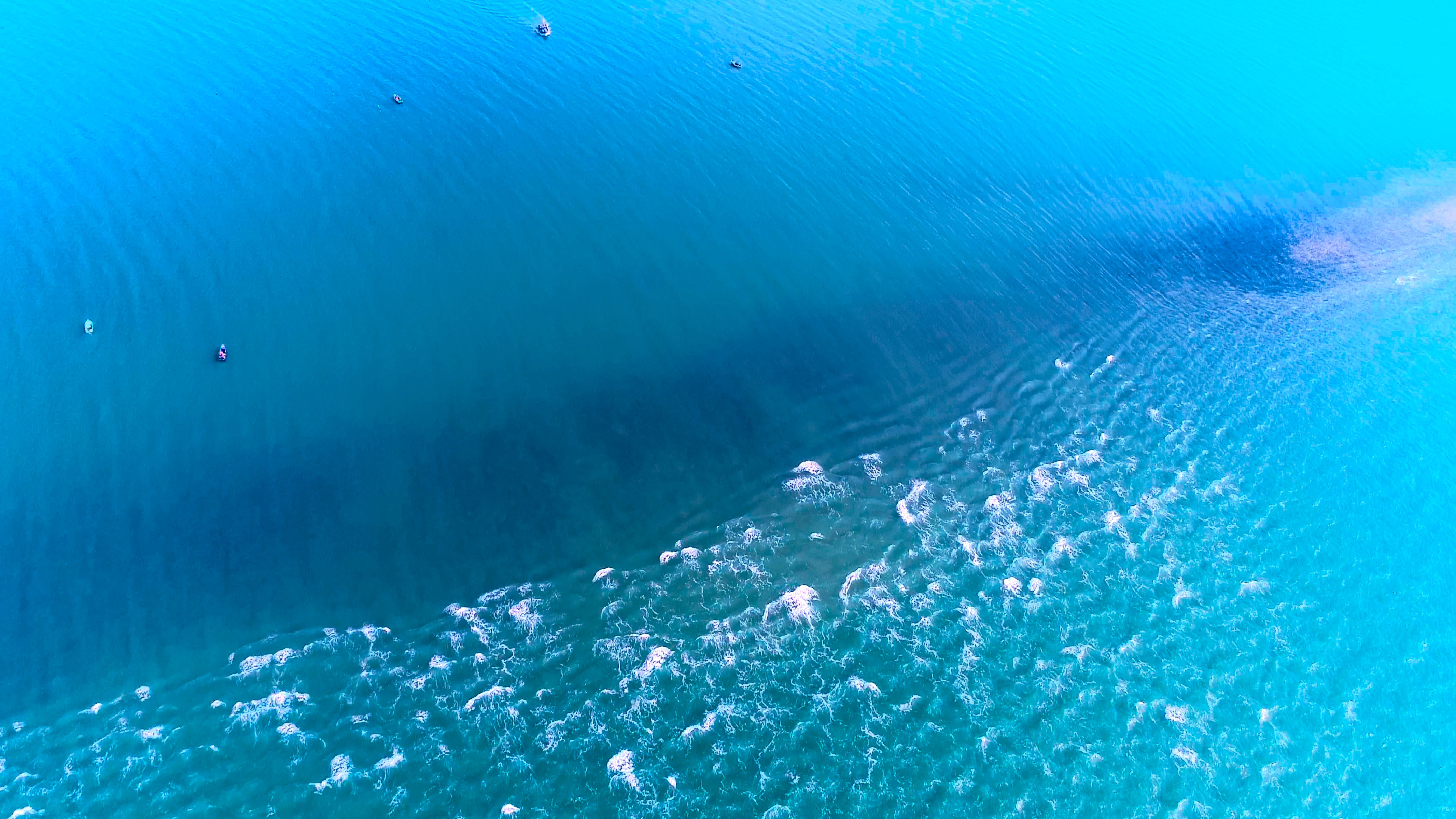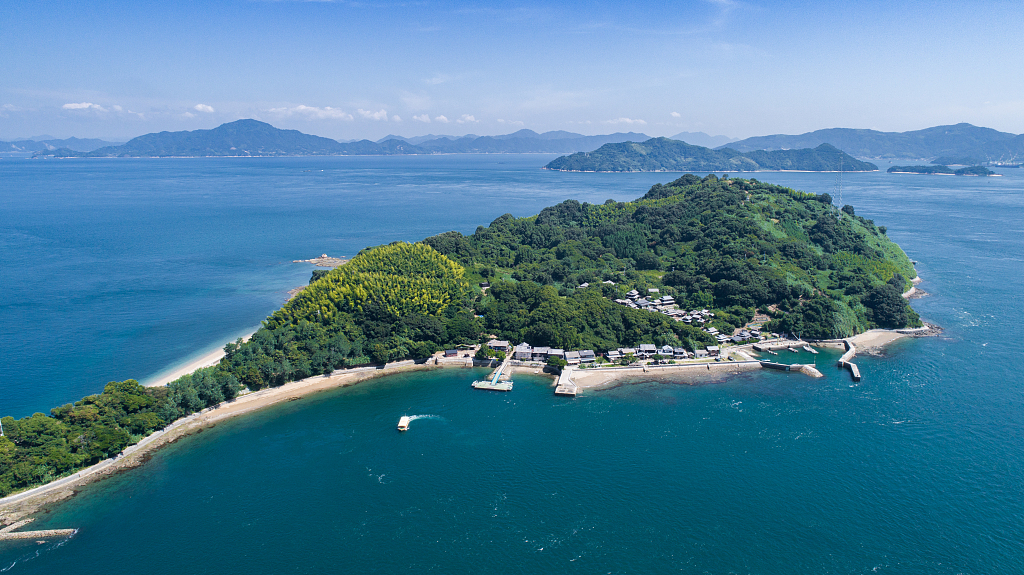A year after China officially established its first five national parks, authorities laid out a new plan aiming to build the world's largest national park system by the year 2035. In the 49 candidate sites for the construction of national parks in the plan, three of them are sea areas, and two are land-sea areas. These sites were selected based on their ecological importance, unique natural landscapes and rich biodiversity.
It is the first time that marine areas have been considered as national park candidates. The three sea areas listed are the South China Sea, known for its tropical marine ecosystems; the Nanji Island, a marine biosphere in a subtropical zone; and the Changdao Island, an important habitat for migrating birds and marine animals in a temperate zone.
The challenges
Early February this year, in a local "two sessions" held in Wenzhou City, east China's Zhejiang Province, Bai Hongbao, a local People's Congress deputy, proposed that Wenzhou should take the Nanji Island in the city's Pingyang County as the core and connect the surrounding islands and sea, to promote the construction of a marine national park.
The deputy proposed that there should be an overall plan for building a marine national park, a marine economic zone and a seaport economic zone. As a coastal province, Zhejiang, with a population of over 65.7 million, is one of the engines driving China's economic growth. Some say it is not easy to balance the large population and fast economic growth with nature conservation, as over-exploitation of ocean resources may happen, along with ocean pollution.

Nanji Island in Pingyang County, Zhejiang Province. /CFP
Nanji Island in Pingyang County, Zhejiang Province. /CFP
The establishment of a marine national park on the Nanji Island may have a long way to go, while the Changdao Island in east China's Shandong Province already announced its intention in 2020, hoping to be one of the country's first marine national parks. However, the conflicts between protection and development stood out.
To keep the core protected area preserved and to give a better life for indigenous people, relocating some residents and providing them with compensations, including new houses, jobs and money, are deemed as win-win solutions in the course of building national parks, such as the Hainan Tropical Rainforest National Park. However, those policies do not fit well in the case of the Changdao Island.

The waters in Changdao is home to fish, shrimps, crabs and other marine creatures like spotted seals. /CFP
The waters in Changdao is home to fish, shrimps, crabs and other marine creatures like spotted seals. /CFP
Chen Shang, who participated in the research and investigation on building a national park on the Changdao Island, said in an early interview that residents on the island are mainly engaged in fishing, and their annual average income reaches 400,000-500,000 yuan (much higher than that of residents in other national parks, with an average income of less than 100,000 yuan). Moving them out of the marine protected areas or stopping them from fishing would greatly affect their interests, hence the compensations they have asked are very high.
The population of Shandong is over 100 million, and its gross ocean product accounted for 18 percent of the region's GDP in 2021. The establishment of the Changdao National Park will affect thousands of households and dozens of businesses.
05:06

(Enjoy the view of Changdao in CGTN Nature's Changdao Series)
Sustainable human-nature relations
How to create marine national parks in densely-populated areas, and how to balance ecological conservation with economic development have drawn researchers' attention. In an article published in the Journal of Beijing Forestry University, Wang Hui of the Liaoning Normal University and other scholars say they have found that national parks established in economically developed coastal areas have combined the nature conservation with public services.
Japan was one of their research subjects. As an island country, Japan's population density is high, with 338.2 persons per square kilometer in 2020, according to the Statistics Bureau of Japan. Its national parks are designed not only for protection, but also for sustainable use.
There are three classifications of zones in Japan's national parks, including special protection zones and marine park zones, where the erection of structures is prohibited, and ordinary zones, which are taken as buffer zones and have settlements and farms.

Seto Inland Sea (Setonaikai). Most of the sea is part of the Setonaikai National Park. /CFP
Seto Inland Sea (Setonaikai). Most of the sea is part of the Setonaikai National Park. /CFP
Encompassing rich coastal plants and marine lives, the Setonaikai National Park is one of the first national parks established in Japan. Once in a while, the conflicts between humans and nature also showed up, when Japan's economy was in rapid growth, resulting in unmonitored pollutants going into the ocean and damaging the ecosystem of the park. Since the 1980s, strict rules and regulations have been implemented, eventually bringing clean water back to the national park.
Nowadays, visitors can not only enjoy the natural landscape of the Setonaikai National Park, but also can join different conservation projects, such as wildlife population surveying, nature observation and beach clean-up activities. The national park has designated a marine park zone for protecting endemic coral species and seagrass beds.
China's aim to protect the marine ecosystem
Other than the three sea areas covered from tropical to temperate zones, two other land-sea areas listed as candidate sites are the Yellow River Estuary and the Liaohe River Estuary. According to Tang Xiaoping, director of the Institute of National Parks, the ecological conservation focuses not only on the land, but also on the ocean as well, thus the new spatial layout plan takes the ecological function and protection of the ocean into account.
For now, all of the candidate sites are still working to meet the criteria to be a national park in China - the three main criteria are ecological importance, management feasibility, and whether the park can be considered a "representative" of the nation.
While China continues to push for the construction of national parks, both the inland areas and marine areas will eventually be coordinated to foster a community of life for humans and nature.
For more:
Shared by Nature: The wild-type marine island national parks
(If you want to contribute and have specific expertise, please contact us at nature@cgtn.com.)